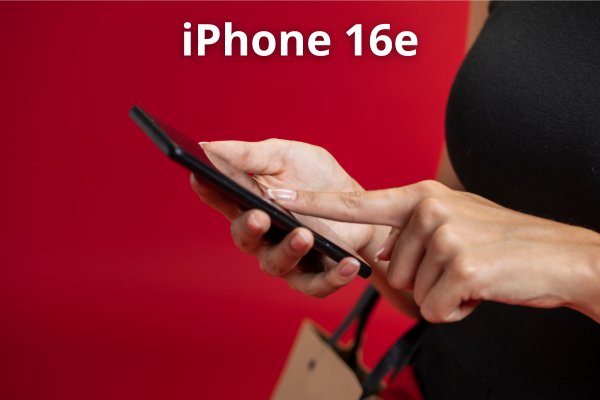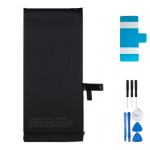What are the dimensions and specifications of the iPhone 16e
Publicado por Maria
What are the dimensions and specifications of the iPhone 16e
Hello, iLevante community! ? If you're already thinking about the future of Apple and are curious about what comes after the iPhone 15, you've come to the right place. Today we dive into one of the most anticipated and rumored models: the hypothetical iPhone 16e. A device that, according to leaks, could be the perfect option for those seeking cutting-edge technology without opting for the Pro models.
In this article, we'll break down all the specifications, dimensions, and possible repairs of this future device. Because at iLevante.com, we not only sell you the spare parts, but we also provide the information you need to know your phone inside and out.
What is the iPhone 16e and how is it positioned in Apple's lineup?
Think of the iPhone 16e as the "essential" of the new generation. It's not an SE with an old design, nor a Pro with all the bells and whistles. It would be the perfect balance: a modern design, a next-generation processor, and some intelligent concessions to maintain an attractive price. It would be the spiritual successor to the standard models but with an even clearer focus on value for money.
This approach makes it an ideal candidate to become one of the most popular phones and, therefore, one of the ones we'll see the most in repair shops! That's why knowing its components is key.
Technical Specifications of the iPhone 16e: A look into the beast's heart ??
Based on the most solid rumors and Apple's historical strategy, we've put together a spec sheet of what we can expect. Here are the key components and spare parts you'll probably find in our online store iLevante.com to keep it like new.
-
Screen: A 6.1-inch Super Retina XDR (OLED) display is expected. This means vibrant colors and true blacks, a substantial improvement. However, to differentiate it from the Pro models, it would retain a 60Hz refresh rate.
- Replacement part available at iLevante.com: Screen for iPhone 16e. The most sought-after replacement, perfect if you drop it and the glass breaks or the display stops showing images.
-
Processor and Memory: Here comes the good news! It will feature the A18 chip with 8GB of RAM. This isn't just raw power; it's the key to making the device compatible with all the "Apple Intelligence" functions, Apple's new AI system.
- Technical note: Although the motherboard is rarely replaced, a powerful processor ensures a longer lifespan and compatibility with future iOS updates.
-
Camera: To keep costs down, the iPhone 16e would likely feature a single 48MP rear lens. But don't be fooled! It would be an incredibly powerful camera, capable of taking high-resolution photos and using 2x digital zoom with excellent quality. The front camera would be the classic 12MP TrueDepth for selfies and Face ID.
- Replacement parts available at iLevante.com: 12 MP front infrared camera iPhone 16e from 39.25€.
-
Battery and Charging: Rumors suggest a battery around 3,561 mAh, slightly higher capacity than its direct predecessors. This, combined with the efficient A18 chip, should guarantee solid all-day battery life. The port would be USB-C, but with USB 2.0 speeds.
-
Replacement parts available at iLevante.com: Battery iPhone 16e 4005mAh NA248H (the second most common repair!) and iPhone 16e Charging Port and Microphone for iPhone 16e if your phone stops charging or callers can't hear you well.
-
Replacement parts available at iLevante.com: Battery iPhone 16e 4005mAh NA248H (the second most common repair!) and iPhone 16e Charging Port and Microphone for iPhone 16e if your phone stops charging or callers can't hear you well.
-
Design and Buttons: It would adopt the standard iPhone 16 design, with aluminum edges and the new vertical camera arrangement (perfect for spatial video recording). The big novelty would be the inclusion of the 'Capture Button' (a dedicated camera button) and the 'Action Button', which is customizable.
- Replacement parts available at iLevante.com: Side Button Set for iPhone 16e.
Table of Dimensions and Measurements of the iPhone 16e
For the more technical among you and those looking for the perfect case ahead of time, here?s a table with the estimated measurements of the device. These dimensions are crucial when buying replacements like the chassis or screen adhesives.
| Feature | Measurement / Specification |
|---|---|
| Height | ~ 147.6 mm |
| Width | ~ 71.6 mm |
| Thickness | ~ 7.8 mm |
| Weight | ~ 173 g |
| Screen Size | 6.1 inches |
| Screen Resolution | 2556 x 1179 pixels |
Beware when changing the screen! Common issues and how to prevent them
Screen replacement is the most common repair, but in modern iPhones, it's a more delicate operation than it seems. If not done correctly, you could lose vital functions. Here, we list the most common issues to consider before getting started.
-
Loss of Face ID ?
The Problem: Suddenly, the iPhone doesn't recognize your face, and you can't unlock it or authorize payments. Why does this happen?
The Technical Cause: The Face ID system relies on a set of sensors (dot projector, infrared camera, etc.) that are on a small and delicate flex cable attached to the back of your original screen. This sensor set is digitally paired with your iPhone's motherboard from the factory. If during repair, when detaching this flex from the broken screen to pass it to the new one, it gets damaged, a micro-circuit breaks, or the cable tears, the connection is lost, and Face ID dies permanently. It's not an Apple software lock?it's a hardware failure!
Prevention: Maximum delicacy. Use moderate heat (with a heat gun or an iOpener) to soften the adhesive and use very thin plastic tools to carefully detach the flex without applying tension or bending it abruptly.
-
Goodbye to True Tone function
The Problem: After changing the screen, the colors look fine, but you've lost the True Tone function, which automatically adjusts the screen's white balance to ambient light.
The Technical Cause: Each iPhone screen has a small memory chip that stores its unique code or serial number. The motherboard reads this code to enable the True Tone function. When you install a new screen (even an original one taken from another iPhone), it has a different code. The motherboard doesn't recognize it and disables the function for security reasons.
Prevention and Solution: The only way to avoid this is with a special tool called a screen data programmer. This device allows you to read the code from the broken original screen and "write" or clone it into the chip of the new screen. If you don't have access to this tool, unfortunately, you'll lose the function.
-
Spots or lines on the new screen
The Problem: You install the new screen, and bright spots, vertical lines, or areas that don't respond to touch appear.
The Technical Cause: This is usually due to a poor connection of the screen's flex cables to the motherboard or excessive pressure applied on them during assembly, damaging the connectors or the cable itself.
Prevention: Before closing the phone, connect the new screen and turn on the device to test that everything works (image, touch, etc.). Make sure the connectors "click" gently into place and aren't forced. Always use the frame adhesive (like those sold at iLevante.com) to ensure a perfect seal and avoid pressure points.
We hope this comprehensive guide on the future iPhone 16e has been very useful to you. Whether you're thinking about buying it or simply passionate about technology, at iLevante.com, you have your perfect ally to find all the spare parts, components, and tools you need for any repair. See you in the next article!









